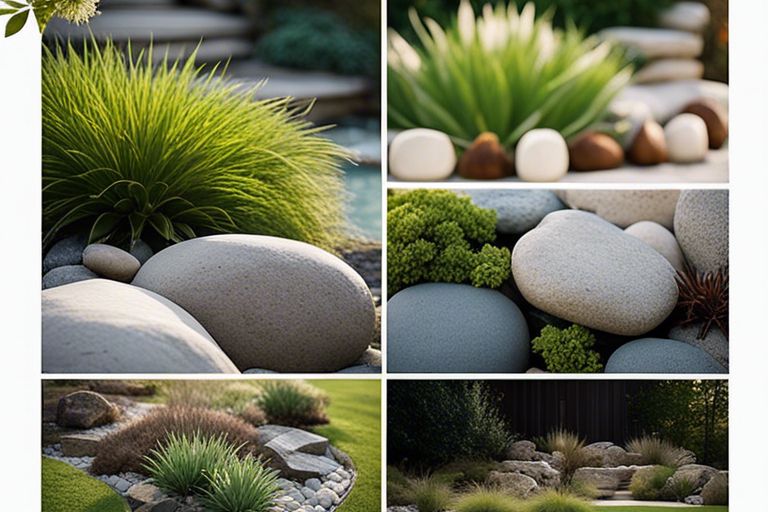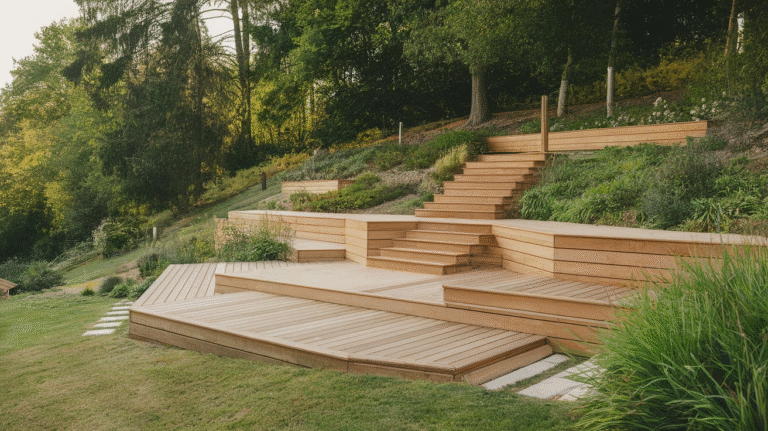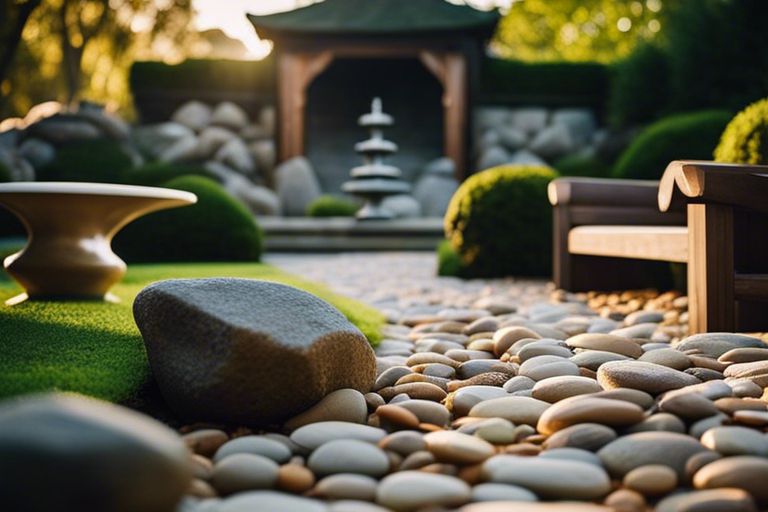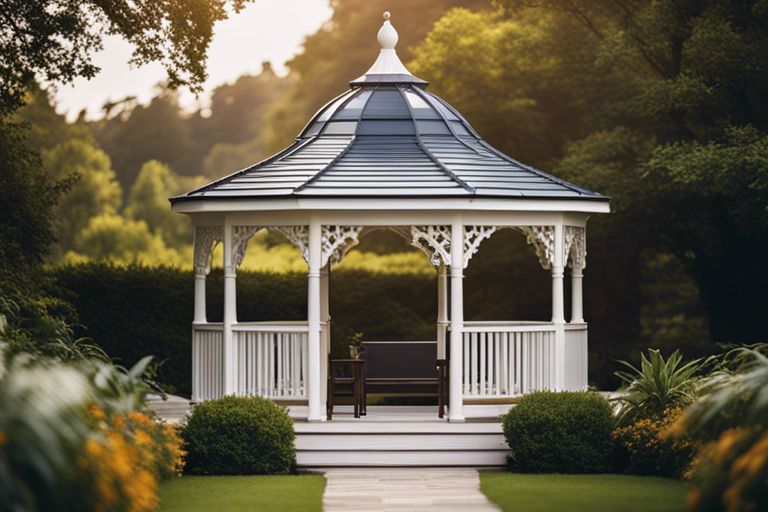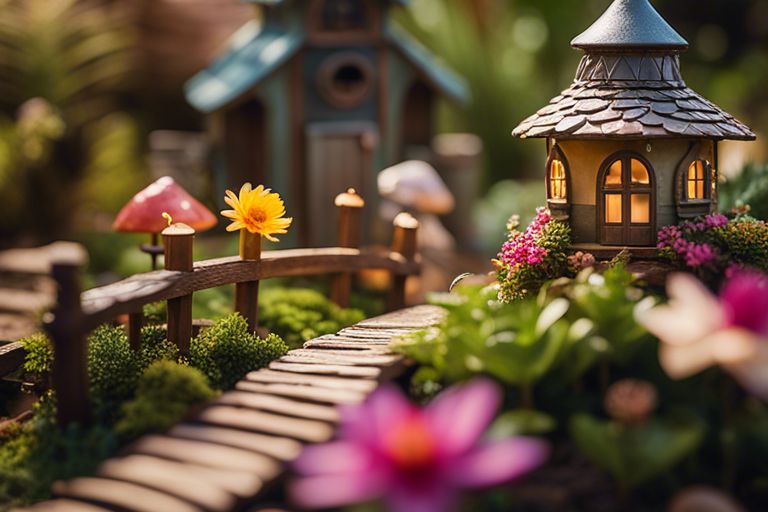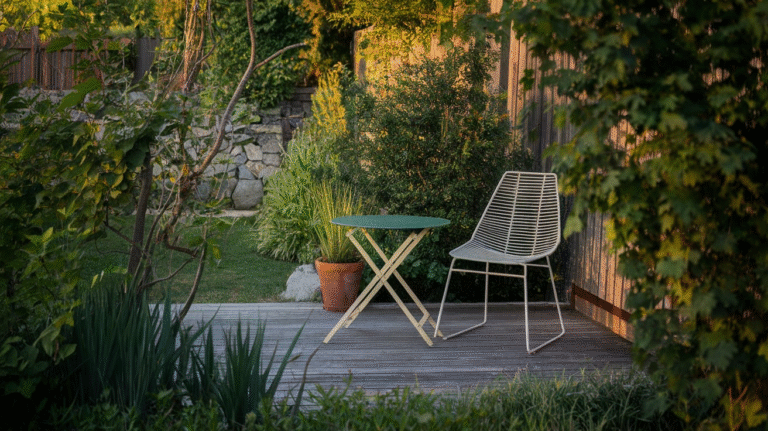18 Dreamy Small Garden Ideas: Transform Your Outdoor Space

Small gardens are like pocket-sized paradises—tiny slices of green that can pack a surprisingly powerful punch.
Whether you’re working with a cramped balcony, a narrow backyard, or a modest patio, your garden can still be a lush, vibrant escape.
You don’t need rolling hills or acres of land to grow something spectacular. In fact, it’s often the tiniest spaces that inspire the most creativity.
I’ve lived in apartments with barely enough room to swing a shovel, but that didn’t stop me from growing cherry tomatoes in a hanging basket or turning a boring slab of concrete into a cozy little Eden.
1. Vertical Gardening Magic
When floor space is scarce, think vertical. Walls, fences, and railings are prime real estate in small gardens.
Install trellises, wall-mounted planters, or hanging pots to grow everything from fragrant jasmine to juicy strawberries.
Even herbs like basil and mint flourish when climbing up rather than spreading out.
According to the National Gardening Association, vertical gardens can increase growing space by up to 60% in small urban areas.
I once transformed a plain wall in my patio into a live canvas of succulents, and guests still ask how I did it. Hint: wire mesh, coconut liners, and a bit of patience.
2. Container Gardening Galore
Don’t underestimate the power of pots. Containers give you the freedom to rearrange your garden like a living jigsaw puzzle.
Go for a mix of sizes and materials—ceramic, terracotta, even repurposed buckets. Choose compact varieties of plants like dwarf citrus trees, patio tomatoes, or trailing ivy. A good rule of thumb: use larger containers for vegetables and smaller ones for herbs and flowers.
Pro tip: Make sure containers have drainage holes. Nobody likes soggy roots.
3. Cozy Seating Nooks
Your garden isn’t just for plants—it’s for you, too.
Add a small bench, a bistro set, or even a hammock chair. Tuck seating into a corner under an arch of vines or beside a fragrant lavender bush. Lighting is key here. A few solar lanterns or fairy lights can turn your mini garden into a magical evening escape.
I once had a foldable wooden chair squeezed between two raised beds. With a glass of wine and a good book, it felt like Provence, even though I was two blocks from a noisy freeway.
4. Raised Beds for Control and Beauty
Raised beds make gardening neater and more manageable. They’re especially handy in small gardens where every inch counts.
Use wood, bricks, or even recycled materials to build your beds. This setup keeps weeds at bay, improves soil quality, and adds visual structure. Compact raised beds can even double as seating if topped with a wide enough ledge.
Statistics show raised bed gardens produce up to 2x the yield of traditional gardens per square foot due to better soil drainage and spacing control.
5. Miniature Water Features
Just because your garden is small doesn’t mean it can’t have drama.
A tiny fountain, birdbath, or tabletop pond adds soothing sounds and visual interest. Water features attract pollinators like birds and bees while creating a tranquil vibe that masks urban noise.
I made a DIY water feature from a ceramic bowl, a small solar-powered pump, and some river stones. It cost under $30 and instantly elevated the mood of the whole garden.
6. Mirror, Mirror on the Wall
Mirrors aren’t just for bathrooms—they can visually double your garden.
Place a mirror on a fence or garden wall to create the illusion of more space. Choose antique or window-style frames for added charm. Just avoid direct sunlight to prevent concentrated heat on plants.
This trick is especially effective in narrow alley-style gardens or enclosed courtyards.
7. Theme-Based Planting
Choose a theme and stick to it. Cohesion creates clarity in a small space.
A Mediterranean garden with rosemary, lavender, and olive trees. A jungle vibe with monsteras and ferns. A cottage garden overflowing with daisies and foxgloves. Thematic planting reduces visual clutter and boosts aesthetic impact.
I once tried a “tea garden” theme with chamomile, peppermint, and lemon balm. My kitchen smelled like an apothecary for weeks.
8. Garden Walls with a Twist
Think of your fence or exterior wall as a blank canvas.
Install pallet planters, pocket organizers, or lattice grids. Grow salad greens, succulents, or flowers that spill over the edges. Some people even attach small shelves to display decorative pots.
This is an excellent solution if your landlord won’t let you dig or install anything permanent.
9. Use Multifunctional Furniture
Space-saving furniture can be a game-changer.
Look for benches with hidden storage, foldable chairs, or garden stools that double as side tables. A planter box with a built-in bench? Genius. This allows you to enjoy the garden without sacrificing planting space.
Think of it as Marie Kondo meets Martha Stewart.
10. Gravel Paths and Paving
Hardscaping brings order and contrast to a plant-filled space.
Create miniature gravel paths, stepping stone trails, or tiled patios. Gravel is affordable, low-maintenance, and excellent for drainage. Paths help define zones, even in small gardens, giving each area a purpose.
Adding a path—even if it’s only five feet long—makes your garden feel intentional.
11. Climbing Plants for Natural Screens
If your neighbor’s laundry line is ruining the view, consider climbing plants as a green privacy screen.
Use honeysuckle, clematis, climbing roses, or even grapevines. They provide cover, scent, and visual height without taking up precious ground space.
According to the Royal Horticultural Society, climbers are one of the most efficient plant types for small gardens due to their vertical growth habit.
12. Lighting That Charms
When the sun dips, your garden shouldn’t vanish.
Install soft outdoor lighting: string lights, solar-powered stake lights, or even LED candles. Lighting makes the garden feel alive after dark and extends your enjoyment into the evening.
I once wrapped fairy lights around a tomato cage and stuck it in a planter—it became the accidental showpiece of my patio.
13. Mini Greenhouses and Cold Frames
Want to extend your growing season or protect delicate plants? Try a mini greenhouse or cold frame.
Compact greenhouses (as small as 3×3 feet) allow you to grow seedlings early and keep herbs thriving through cooler months. Even an old window propped over a wooden box works as a DIY cold frame.
Especially helpful if you live somewhere with unpredictable weather like I do—where spring sometimes shows up drunk and confused.
14. Recycled and Upcycled Accents
Add personality with repurposed items. Old ladders become plant stands. Teacups turn into succulent homes. Crates become herb planters.
This isn’t just quirky—it’s sustainable. Plus, it saves money and keeps stuff out of landfills. I once used an old wooden shoe rack to organize potted herbs. My neighbors thought I’d hired a designer.
15. Edible Landscaping
Who says a garden can’t be beautiful and tasty?
Blend edible plants with ornamentals. Think kale with marigolds, strawberries in hanging baskets, or a tomato plant beside some cosmos. This maximizes your space and gives you snacks along the way.
Stats don’t lie—urban home gardeners who grow food save an average of $600 annually, according to the National Gardening Association.
16. Small Tree Wonders
Yes, you can have trees in small gardens—you just need the right ones.
Dwarf or columnar varieties like olive trees, dwarf Japanese maples, or citrus trees in pots work beautifully. Trees provide shade, height, and seasonal interest.
I had a potted lemon tree on my city balcony for two years. Every summer, it gave me a few fruits and a whole lot of joy.
17. Layered Planting for Depth
In a small space, layers add richness and complexity.
Use tall plants in the back (bamboo, grasses), medium plants in the middle (salvia, geranium), and low-growers like thyme in front. This approach mimics natural ecosystems and avoids a flat, one-dimensional look.
Layering also ensures each plant gets sunlight, avoiding fights for the spotlight.
18. Wildlife-Friendly Features
A small garden can still be a haven for birds, bees, and butterflies.
Add a bee hotel, install a bird feeder, or plant pollinator-friendly flowers like echinacea and bee balm. Even a tiny pond can attract frogs and dragonflies.
Creating a wildlife-friendly garden isn’t just good karma—it’s vital for biodiversity. According to the UK’s RHS, private gardens cover more land than all the nature reserves in the country combined.
Final Thoughts
Small gardens aren’t about limitations—they’re about possibilities. When every square foot matters, you make smarter, more creative choices. You notice the magic in the details: the scent of thyme underfoot, the hum of bees in the morning, the way dew clings to a leaf like it’s holding on for dear life.
With these 18 dreamy small garden ideas, you can turn even the tiniest outdoor nook into a living, breathing sanctuary. You don’t need more space. You just need the right approach—and a little imagination.

